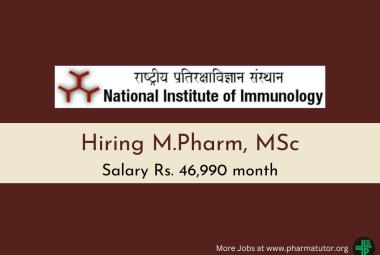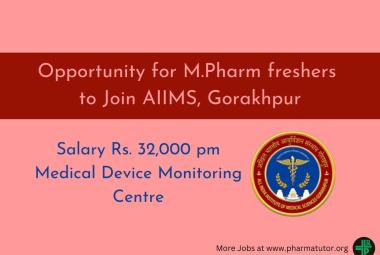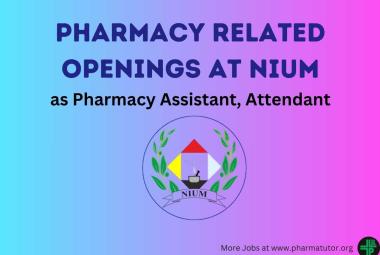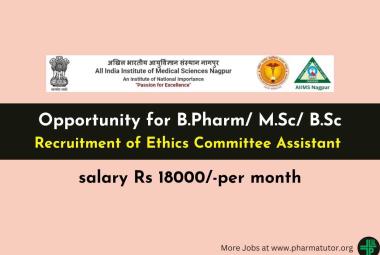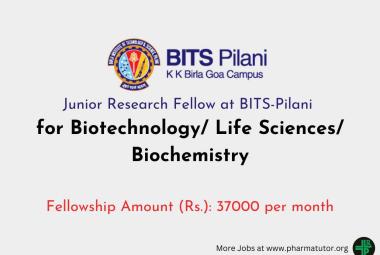About Author: D. Gopi Krishna
M.Phil
Tirumala Engineering College
Hyderabad, Andhra Pradesh
ABSTRACT:
Antibiotics are one of the most important commercially exploited secondary metabolites produced by the bacteria and employed in a wide range. Most of the antibiotic producers used today are the soil microbes. Fungal strains and streptomyces members are extensively used in industrial antibiotic production. Bacteria are easy to isolate, culture, maintain and to improve their strains. Microbes are omni present and exist in a competitive environment. Bacillus species being the predominant soil bacteria because of their resistant endospore formation and production of vital antibiotics like bacitracin etc. are always found inhibiting the growth of the other organisms. In the present project a soil bacterium with the antibiotic activity is screened studied for morphological characters which can provide valuable information about the strain. The inhibitory activity of the organism is checked against some of the important opportunistic microbial flora and inoculated into an appropriate designed media depending on the bacterial requirements, and incubated for 48 hrs at 370C. The produced compound is extracted by solvent extraction and assayed for its activity. Enhancement in the antibiotic production is studied under various parameters like temperature, pH, carbon source concentration, and Sodium nitrate concentration, which may help in the industrial production. The extracted substance was found effective against the gram positive endospore forming bacilli and gram positive coci. Though a large list of antibiotics are commercially available, the search for the most potential one is still on, and this work may provide some potential information on the antibiotic production and the control of microbial strains.
Objective: The objective of the present study is production extraction and assay of antibiotics from bacterial and fungal isolates using soil as source.
[adsense:336x280:8701650588]
MATERIALS AND METHODS
Isolation of antibiotic producers
Principle:
Micro organisms are omnipresent and always exist in a competitive environment . During their metabolism, they produce many type of secondary metabolites which inhibit the growth of the surrounding strains. In such a competetive environment, most microorganisms produce antibiotics to maintain their predominance.
Materials Required:
1. Soil sample (1 gm)
2. Sterile petri plates
3. Sterile test tubes
4. Sterile micropipette tips
5. Nutrient agar medium
6. Normal saline (0.87%)
Nutrient agar composition:
1. Peptone 0.15gm
2. Beef extract 0.09gm
3. Sodium chloride 0.15gm
4. Agar 0.6gm
Procedure:
30 ml of normal saline is prepared and distributed into 3 test tubes, taking 10 ml for the stock, 9ml for 10-1 and 10-2 dilutions and sterilized by autoclaving. 1gm of soil sample is weighed and added into the stock test tube with 10ml of saline under sterile conditions. The sample is vortexed for 2 -3 mins, and allowed to stand for 2 mins. 1 ml of sample from stock is transferred into 10-1 test tube and shaken properly. 1ml of sample from 10-1 test tube is collected to transfer to the 10-2 test tube. 15 ml of the prepared Nutrient agar medium is poured into the sterile Petri plates and allowed to solidify. 0.5 ml of sample is collected from the dilution test tubes and spread plated using a sterile glass spreader. The plates are inverted and incubated over night at 370 C
Pure culturing
Materials Required:
1. Sterile test tubes
2. Nutrient agar medium
3. Spread plated plates
Procedure
Nutrient agar medium is prepared in a conical flask and sterilized. The nutrient agar medium is poured into test tubes and allowed to solidify by placing in a slanting manner in the laminar air flow. The bacterial colonies showing inhibition zone are collected carefully and streaked on the slant. The test tubes are properly closed by cotton plugs and kept in the incubator at 370C over night.
SCREENING
Principle:
Inhibition zones in a competitive environment are developed both by the organic acid producers and the antibiotic producing strains. The strains with organic acid production are eliminated by growing on calcium carbonate medium.Organic acids react with CaCO3 and dissolved to CaO and CO2.On CaCO3 medium only organic acid producers develop a clear zone that are discarded.
Materials Required:
1. Nutrient agar medium
2. Calcium carbonate
3. Petriplates
Procedure:
Nutrient agar medium with 1% CaCO3 is prepared and sterilised by autoclave. The media is allowed to cool to 50-600c and poured into the sterilised petriplates and allowed to solidify. Isolated colonies from slant culture is selected and taken carefully with an inoculating loop and streaked on the solidified medium in the petriplates. The petriplates are incubated at 370c overnight.
MORPHOLOGICAL OBSERVATIONS (Gram’s Staining)
Materials Required:
1. Slide
2. Crystal violet
3. Gram’s iodine
4. Decolouriser
5. Safranine
Procedure:
Using an inoculating needle a colony is taken aseptically and put on a clean slide and heat fixed. Crystal violet is added on the slide and allowed to stand for 60 sec and washed by distilled water. Gram’s Iodine is added and left for 30 secs then the decolouriser is added from one side of the slide till it become light violet. Safranine is added on the slide and allowed to stand for 1 min, then the slide is washed by distilled water. Slide is air dried and observed under the microscope ( 40 X and 100X).
ASSAY OF ANTIBIOTIC ACTIVITY OF MICROORGANISMS BY STREAK METHOD
Materials Required:
1. Petriplates
2. Inoculating loop
3. Nutrient agar medium
Procedure:
Nutrient agar medium is prepared and sterilized and is poured into Petri plates under aseptic conditions in a Laminar air flow. The organism expected to be the antibiotic producer is streaked on the solidified agar plate dividing it into two halves and test organisms like micrococcus and bacilli were streaked diagonally on either side of streak of selected culture. Next day the growth of the test organisms is checked for the inhibition.
Antibiotic production
COMPOSITION OF PRODUCTION MEDIA
Bacterial Production Media:
1. Glucose(3gm)
2. NaNO3(0.6gm)
3. KH2PO4(0.1gm)
4. KCl(0.5gm)
5. MgSO4(0.02gm)
6. FeSO4(0.01gm)
7. Peptone(5gm)
8. Beef Extract(3gm)
9. H2O(100 ml)
Preparation of production media:
All components are weighed and added to distilled and is made up to 50ml. Now this 50ml broth is sterilized in autoclave at 120 deg C at 15 lbs for 15 minutes. Sterilized broth is inoculated with test culture under aseptic conditions and is transferred shaker incubator. The production medium along with the inoculated test culture is kept in shaker incubation for incubation, for 1 day. Then the production medium is transferred from shaker incubator to normal incubation and is kept for incubation for 1 days. Now the test culture is checked for growth by testing the optical density of culture.
Extraction: After two days, the maximum amount of antibiotic will have been produced as the secondary metabolites are released into the medium during their stationary phase and the extraction can be done . Depending on the specific antibiotic produced, the fermentation broth is processed by various purification methods. For example, for antibiotic compounds that are water soluble, an ion-exchange method may be used for purification. The compound is first separated from the waste organic materials in the broth and then sent through equipment, which separates the other water-soluble compounds from the desired one. To isolate an oil-soluble antibiotic such as penicillin, a solvent extraction method is used. In this method, the broth is treated with organic solvents such as chloroform, which can specifically dissolve the antibiotic. The dissolved antibiotic is then recovered using various organic chemical means. It can be further refined into different product types.
Preparation of Crude Extract
When the O.D of culture broth is upto 0.4-0.6 , 5ml of the inoculated production broth is taken and is subjected to centrifugation at 6000 rpm for 10 minutes. Bacterial cells were pelleted out. The cells pellet is discarded and supernatant is stored at 4 deg C in a refrigerator this supernatant is the crude extract which is tested for the antibiotic activity.
Antibiotic Assay of The Crude Extract
Various methods are available for testing the sensitivity of organisms to antibiotics. The most widely used method for routine use is the disc diffusion method on Mueller-Hinton agar. The accepted methodology was standardized by Kirby, Bauer, and Sherris.Automated technologies (Autobac, Vitek, etc.) use turbidimetric responses to determine antimicrobial susceptibility, and are becoming increasingly utilized in large clinical laboratories.In sensitivity testing, there is a high degree of standardization to ensure reproducible results. This standardization includes the size of inoculum, the ionic strength of the medium and type of medium used, the amount of antibiotic tested and in the case of Kirby-Bauer (a plate qualitative disc diffusion method), the thickness of the agar. Zone size recommendations for interpretation of the Kirby-Bauer (resistant, intermediate, sensitive) are supplied by the manufacture
Well Method of Antibiotic Assay
Nutrient agar medium is prepared and sterilized and is poured into petriplates under aseptic conditions in a Laminar air flow. The petriplates are kept for setting of medium for some time. Now the wells are made at selected areas in petriplates. Now the test organisms micrococcus and the bacillus strains are swabbed on the Petri plates with a sterile swab. The petriplates are left for sometime. The crude extract obtained from centrifugation of production medium is taken with a micropipette and is loaded into the wells. Each well is supplied with a volume of 100micro liters. Now these petriplates were incubated overnight with out inverting at optimum temperature of 37 deg C for 24 hours.Strain showing the more inhibition was selected and checked for the increasing
concentrations of the antibiotic with effect to the increasing concentrations of the sodium nitrate.
Antibiotic Assay By Disc Method: Nutrient agar medium is prepared and sterilized and is poured into petriplates under aseptic conditions in a Laminar air flow. The petriplates are kept for setting of medium for some time.The supernatant of production medium is collected and stored at 4 deg C.Antibiotic activity is assayed for the supernatants.Using whattmen paper discs are prepared and are immersed in vials and stand for 30 min.E.coli and Pseudomonas cultures are taken.now the cultures are swabbed on petriplates.then the antibiotic discs are placed on the nutrient agar medium using foreceps . Now these petriplates were incubated overnight with out inverting at optimum temperature of 37 deg C for 24 hours.
Optimization of Production Medium
Procedure:
Bacterial production media is prepared with 0.8%, 1%, 1.2%, 1.4%, respectively and sterilized. Bacterial strains are inoculated and incubated at 120rpm for 48 hours. After 2 days cells are pelleted out at 6000 rpm for 10 mins and the supernatant is collected and stored at 40C. Antibiotic activity is assayed for the supernatants.
RESULTS & DISCUSSION
ISOLATION OF ANTIBIOTIC PRODUCERS(crowded plate technique): Bacterial colonies were observed in a crowded fashion from which colonies showing inhibition zones are selected.
PURE CULTURING: Pure culture streaks were observed. Slants with out contamination are selected
Screening: Some bacterial colonies showing inhibition zone i.e the bacteria utilising CaCO3 and reguarded as organic acid producers. So they are discarded and others were taken for further cultures.
MOROPHOLOGICAL OBSERVATIONS: Gram positive endospore forming bacilli were observed. Strain was found contaminated
|
Culture no |
Morphology |
Arrangement |
Gram nature |
Endospore |
Cell wall swelling |
|
1 |
Bacilli |
Mono and diplo |
Gram positive |
Positive(Subterminal) |
positive |
|
2 |
Bacilli |
Mono |
Gram positive |
Positive(central) |
positive |
|
3 |
Bacilli |
Mono and diplo |
Gram positive |
positive |
Negative |
ANTIIBIOTIC ASSAY BY WELL METHOD: Inhibition zones for E.coli and pseudomonas were observed around the region surrounding the wells that contain crude extract. Inhibition zones are measured using a measuring scale. They are observed to be:
Culture 1: pseudomonas light inhibition
Culture 2: E.coli shown inhibition
ANTIBIOTIC ASSAY BY DISC METHOD: Inhibition zones for E. coli and pseudomonas were observed around the region surrounding the discs.
OPTIMIZATION OF ANTIBIOTIC PROCEDURES
Concentration of NaNO3 Zone of Inhibition
0.8 % 1 cm
1% 1.1 cm
1.2% 1.4 cm
1.4% 0.9cm
Antibiotic disc showing zone of inhibition
CONCLUSION
The soil microbial isolate isolated was showing antibiotic activity under normal growth conditions and was found inhibiting the gram positive bacillus and cocci. Crude extract of the microbial culture was proved showing the inhibition which is further purified by the solvent extraction procedure .Sodium nitrate in increasing concentrations was found to have an enhancing effect on the bacterial antibiotic activity , but high concentrations that is more than 1.2 % was found detrimental . At 1.4 % the activity was found less inferring the effect of high concentrations of sodium nitrate in antibiotic production. Gram positive strains being more resistant because of their resistant spore formation were very hard to control .This work may provide an helpful information on the bacterial strain application in the industrial production of antibiotic that can easily control the gram positive strains. As the strain was a soil isolate its isolation, culturing and industrial exploitation aspects will be very easy to control. We suggest the strain improvement by the mutagenic agents may still enhance the activity. Extraction and purification methods can be employed for the pure antibiotic extraction.
Reference ID: PHARMATUTOR-ART-1038
FIND OUT MORE ARTICLES AT OUR DATABASE



